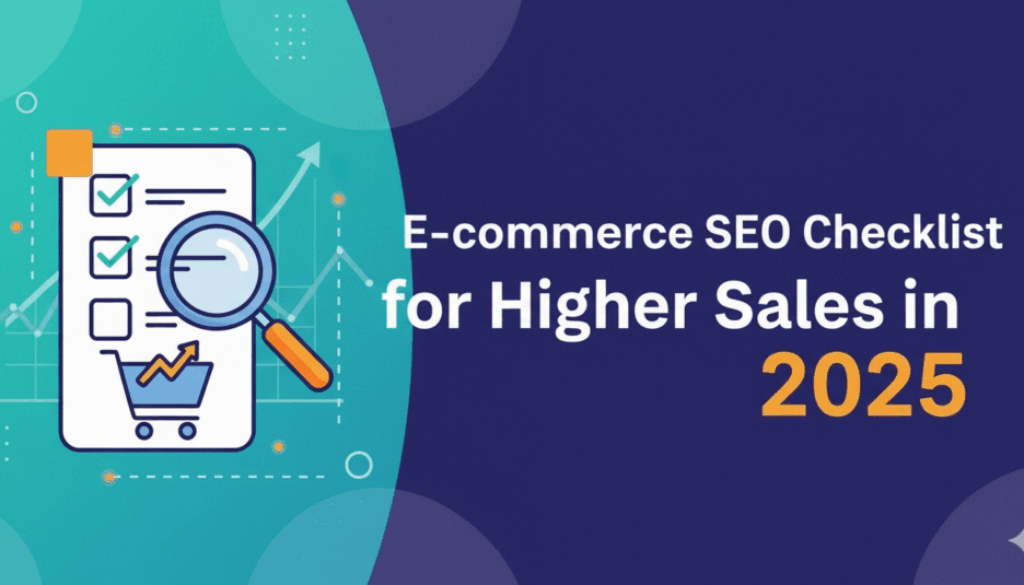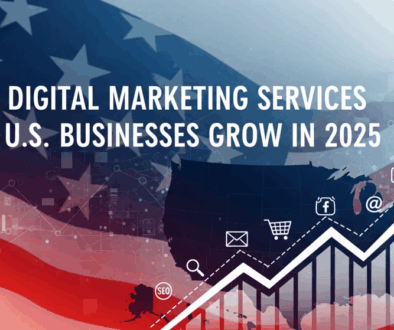Organic search drives more than 40 percent of all e-commerce sales in the year 2025, and the visibility in Google outcomes is more vital than ever. With thousands of online stores that compete in terms of clicks, it is not enough to rely on paid ads to remain at the top. Companies require e-commerce seo services so that their products are not only visible but also at the top of the search results.
Online retail space is more competitive than ever, and the absence of a solid strategy causes even the best products to become invisible to potential buyers. And this is where online store SEO comes in. Whether it is the optimization of category pages or an improvement of product page SEO, the appropriate strategies create sustainable visibility, trust, and increased conversion.
This blog is not another generic guide; it is a step-by-step checklist that can guide e-commerce businesses to improve rankings, bring qualified traffic, and turn clicks into loyal customers. When you are willing to shine and maximize the sales potential of your store, then this checklist is your guide.
Elevate Sales with Professional E-Commerce SEO Services
Why does e-commerce SEO matter more in 2025? The field of online shopping is rapidly developing, and AI-based recommendations and voice search are changing how customers can learn about products. Meanwhile, the new algorithms of Google are rewarding websites that align themselves with the user intent, relevance, and quality experiences. Customers have become more demanding of online stores that provide a streamlined navigation, blazing loading speeds, and streamlined checkout processes. Small changes in product page SEO can turn around the difference between empty carts and increased sales. That is where professional e-commerce SEO services come into the picture, assisting businesses to adapt to change and be ahead of their rivals.
Maximize Growth with E-Commerce SEO Services
Optimize Your Product Pages First
In order to boost sales, begin with the SEO of your product page. Each product page should contain a specific description without copying the manufacturer’s text and emphasising your brand voice. Make sure to use keyword-based titles and ensure that you optimize your images by using alt descriptions.
Schema markup reviews, prices, and availability will assist Google in showing rich snippets, which increases the rate of clicking. Don’t forget internal linking connects related products, upsells, and cross-sells so shoppers (and crawlers) can easily explore your catalog.
When you invest in SEO for online stores, your product pages stop being static listings and start working like conversion-focused landing pages. That’s how you get discovered, clicked, and purchased.
Improve Site Architecture & Navigation
Search engines and your customers should never get lost on your website. A clear, simple category system makes all the products accessible and does not leave behind any orphan pages.
Use breadcrumb navigation to make it simple for visitors to retrace steps, while also giving Google a clear hierarchy of your store’s layout. Keep a flat site structure so crawlers reach any product page within three clicks. The smoother your architecture, the higher you are ranked in the pages, and the more users are converted.
Focus on Mobile-First & Core Web Vitals
Mobile has become the largest source of e-commerce traffic (more than 70%). This implies that mobile-first design is not a luxury; it is a necessity. Ensure that your store loads in a fraction of a second, scales well across platforms, and has a smooth checkout process.
Google focuses on mobile user experience (UX) and Core Web Vitals, page speed, visual stability, and interactivity in its rankings. The optimization of these technicalities makes users interested, lessens cart abandonment, and directly boosts your bottom line.
Create SEO-Rich Content Beyond Product Pages
If you only focus on your product pages, you’re leaving traffic on the table. The e-commerce brands that succeed in 2025 will create content that is more search engine-friendly, such as blogs, buying guides, comparison posts, and how-to videos.
Use long-tail keywords like best eco-friendly running shoes 2025 to attract the attention of customers who do their research prior to making a purchase. This kind of content not only generates relevant traffic, but it also establishes your brand as an authority in your niche. The result? Increased exposure, better backlinking, and increased conversions.
Leverage Technical SEO for Online Stores
Good technical SEO provides a competitive advantage to your store. It is always best to create updated XML sitemaps for products and categories so that the search engines can crawl effectively. Apply canonical tags to avoid the problem of duplicated content in variations of the product.
Don’t overlook trust factors; an HTTPS-secured checkout not only reassures customers but also signals reliability to search engines. Scalable growth of your online store is based on technical health.
Build Authority with Link-Building & Digital PR
Search ranking is not only dependent on on-site optimization, but it also relies on authority. Invest in link-building campaigns, and that may be in the form of guest blogging, influencer partnerships, or appearing in the local press.
As your brand gets backlinks on high-authority websites, your domain authority increases, and you rise up the SERPs. To most enterprises, it is the most intelligent decision to collaborate with a managed e-commerce SEO services provider. Experts handle strategy, outreach, and monitoring, while you focus on growing sales.
Conclusion
Following this e-commerce SEO checklist ensures your store ranks higher, attracts qualified traffic, and converts visitors into loyal customers. With expert guidance, you’ll stay ahead in the competitive online market. Don’t let your competitors outrank you. Contact our team today for expert e-commerce seo services and start turning clicks into conversions.

CORPORATE OFFICE
2001 N Lamar Street
Suite Number 270
Dallas, TX 75202



